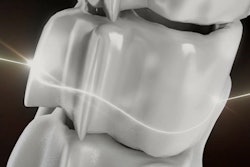Wednesday, November 28 | 3:10 p.m.-3:20 p.m. | SSM13-02 | Room E353C
In this Wednesday presentation, Swiss researchers will detail how they were able to lower surgical times for repairing orbital wall fractures with 3D-printed models based on CT scans of the skull.The investigators, led by Drs. Florian Thieringer and Philipp Brantner from University Hospital Basel, acquired the CT scans of 22 patients who required surgical treatment for trauma around their eye socket bones. They used these CT scans to produce patient-specific 3D-printed models of the orbital wall at their hospital's in-house 3D printing lab.
Each of the 3D-printed orbital wall models served as an individually tailored scaffold onto which the clinicians were able to construct a titanium mesh. Typically, clinicians cut and shape titanium meshes to fit the patient's unique orbital wall fracture during surgery, which requires a considerable amount of operating time. With the aid of 3D printing, however, the clinicians were able to complete this task even before starting surgery.
This preoperative use of the 3D-printed models led to statistically significant reductions in operating time; surgeries relying on the premade titanium implants took an average of 32 minutes less than the standard surgical method.
The reduction in operating time could minimize the risk of complications and ultimately improve patient outcomes, Brantner told AuntMinnie.com.
"Since 3D printing is less cost- and staff-intensive, the workload shift from operating room to the 3D print lab represents a considerable cost reduction while at the same time offering an opportunity to expand the radiologic service through 3D printing," he said.




















